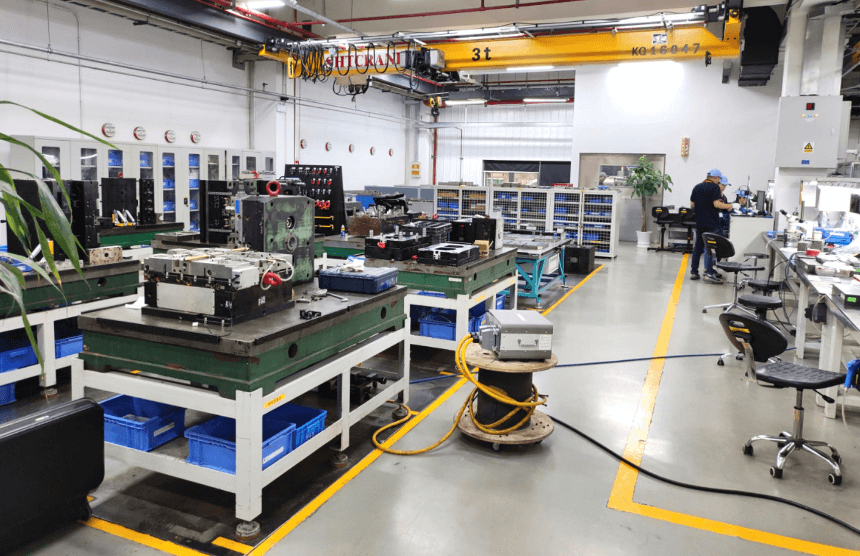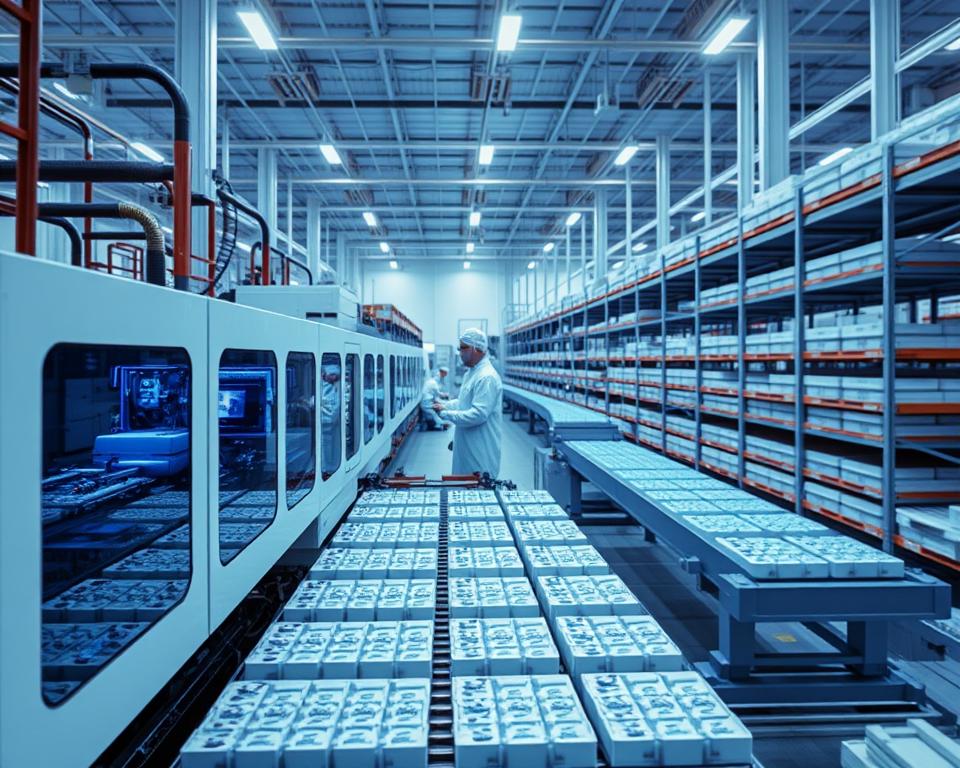When it comes to creating millions of identical plastic parts quickly and affordably, few methods match the efficiency of injection molding. This manufacturing process has become the backbone of industries requiring precision, speed, and scalability. From automotive dashboards to medical syringes, it delivers consistent results that keep production lines moving.
The technique works by heating raw materials until molten, then forcing them into custom-designed molds under high pressure. Once cooled, these molds release finished components ready for assembly. This repeatable cycle allows companies to produce thousands—or even hundreds of thousands—of items with minimal variation.
Cost efficiency drives its popularity. After initial tooling expenses, per-unit prices often drop to $1–5, making it ideal for large orders. Manufacturers can achieve tight tolerances as precise as ±0.002 inches, ensuring parts fit perfectly in complex assemblies.
Industries worldwide rely on this approach for its adaptability. Whether producing smartphone cases or aerospace components, the process scales effortlessly to meet demand. Its ability to handle intricate geometries while maintaining material strength makes it a cornerstone of modern production.
Key Takeaways
- Enables mass production of 1,000 to 100,000+ units cost-effectively
- Delivers per-part costs as low as $1–5 after initial setup
- Maintains precision within ±0.002 inches for consistent quality
- Supports diverse industries like automotive, healthcare, and consumer goods
- Scales efficiently without compromising speed or part complexity

The Demand for Consistent, High-Quality Parts
Consistency drives profitability in mass production. A single flawed component can halt assembly lines or compromise product safety. This method achieves repeatable accuracy down to ±0.005 inches—comparable to aerospace machining but 40% faster.
Industries like consumer electronics rely on this precision. Smartphone buttons, battery casings, and camera modules require flawless alignment. Even microscopic defects become unacceptable when producing 500,000 units weekly.
Overview of Core Benefits
Three factors make this approach indispensable for large-scale operations:
- Material flexibility: Over 25,000 engineered polymers adapt to heat resistance, flexibility, or transparency needs
- Speed-to-market: Cycle times under 30 seconds enable rapid scaling
- Cost control: Per-unit expenses plummet after initial tooling
One automotive supplier reduced part costs by 62% while maintaining ±0.004-inch tolerances. Such results explain why 78% of mass-produced plastic components use this technique today.
Injection Molding: Process Fundamentals
Mass-producing plastic components demands a system that combines precision engineering with rapid execution. This approach transforms raw materials into finished products through carefully orchestrated phases, each critical to maintaining quality at scale.
Material Transformation Stages
The journey starts with polymer granules entering a heated chamber. Precise temperature controls melt the material to syrup-like consistency. A rotating screw mixes the molten plastic while pushing it toward the shaping tool.
High-pressure systems then force the liquefied material into custom-designed cavities. Cooling processes solidify the parts within seconds before automated ejectors release them. This sequence repeats every 30-90 seconds, creating a continuous production stream.
Essential Equipment Breakdown
Three primary systems work in unison:
- Material prep unit: Melts and mixes raw plastics
- Shape-defining tool: Crafts components to exact specifications
- Pressure management system: Secures tools during filling and releases finished pieces
The screw mechanism serves dual purposes – blending materials while building pressure for consistent fills. Advanced controls adjust temperatures within ±2°F, ensuring optimal flow characteristics throughout production cycles.
Advantages of Injection Molding in Mass Manufacturing
Economic efficiency drives modern manufacturing, and few processes deliver it as effectively as this production method. By combining speed with precision, manufacturers achieve both scale and consistency, critical factors in competitive markets.
Cost Efficiency and Rapid Cycle Times
Cycle durations between 10 and 60 seconds let facilities produce hundreds of parts hourly. After initial tooling expenses, per-unit costs drop sharply—often reaching $0.10-$2 for large orders. This makes it ideal for producing 50,000+ components without budget strain.

Automated systems further reduce labor needs. One automotive supplier cut production expenses by 58% while maintaining 99.9% part consistency. Such savings enable companies to reinvest in innovation or expand product lines.
High Repeatability and Tight Tolerances
Steel molds withstand over 100,000 cycles with minimal wear, ensuring identical outputs. Precision tolerances down to ±0.125 mm meet strict industry standards for medical devices and aerospace components.
This repeatability eliminates costly quality checks. A consumer electronics firm reduced post-production inspections by 80% while achieving zero defect rates. Such reliability streamlines supply chains and accelerates time-to-market for new products.
The Role of Draft Angles and Uniform Wall Thickness
A slight taper—typically 1-2 degrees—on vertical surfaces helps parts release smoothly from tools. Without draft angles, friction can cause scratches or warping. One medical device maker reduced tool damage by 40% after optimizing these angles.
Consistent wall thickness ensures even cooling. Variations over 25% risk sink marks or air traps. “Thin walls cool faster than thick ones, creating internal stresses,” notes a materials engineer at a Fortune 500 manufacturer. Aim for ±10% uniformity unless functional needs demand otherwise.
Strategies to Avoid Undercuts and Ease Demolding
Undercuts—features that prevent straight tool separation—require complex sliding cores. Redesigning snap-fit joints as angled hooks eliminated side actions in a recent automotive project, cutting mold costs by $18,000.
Three best practices simplify demolding:
- Replace sharp corners with radii (0.5-1mm minimum)
- Position ribs at 60% of main wall thickness
- Align bosses with ejection direction
These adjustments reduce cycle times while maintaining structural integrity. Proper gate placement also minimizes weld lines—weak spots where molten flows meet.
Mold Design and Material Selection for High-Volume Production
Creating durable components at scale demands a perfect marriage between tool engineering and polymer science. With over 25,000 material options available, manufacturers can fine-tune parts for specific performance needs while ensuring molds withstand millions of cycles.
Selecting the Right Materials for Optimized Performance
Material choice directly impacts both part quality and mold longevity. Common polymers like ABS and polypropylene dominate production lines due to their balanced properties:
| Material | Key Properties | Common Uses |
|---|---|---|
| ABS | Impact resistance, heat stability | Automotive trim, electronics housings |
| Polyethylene | Chemical resistance, flexibility | Food containers, medical devices |
| Polypropylene | Low density, fatigue resistance | Living hinges, laboratory equipment |
Advanced composites push performance boundaries. Glass-filled thermoplastics increase stiffness by 60% compared to base resins. “Material properties dictate cooling rates and gate designs,” explains a tooling engineer at a Fortune 500 manufacturer.
Mold construction materials balance cost and durability. Aluminum suits prototypes and short runs (under 10,000 units). Hardened steel becomes cost-effective for mass production, lasting through 1 million+ cycles despite higher upfront costs.
“Cooling channel placement impacts cycle times more than any other design factor in high-volume scenarios.”
Smart mold design integrates ejection systems and venting paths during the CNC machining phase. Proper runner layouts reduce material waste by 15-20%, while uniform wall thickness ensures consistent cooling across complex geometries.
Optimizing Production Speed and Reducing Lead Times
Manufacturers face a constant push to deliver parts faster without sacrificing quality. While traditional methods like 3D printing take hours per unit, modern techniques achieve results in seconds. The key lies in balancing rapid cycles with smart planning to overcome longer preparation phases.
Maximizing Efficiency with Shorter Injection Cycles
Cycle times often determine overall output capacity. Most processes complete parts in 10-60 seconds through three optimized stages:
| Stage | Time Reduction Tactics | Impact |
|---|---|---|
| Material Heating | Precision temperature controls | 15-20% faster melting |
| Cooling Phase | Conformal cooling channels | 40% shorter solidification |
| Part Removal | Automated ejection systems | 0.5-2 sec savings per cycle |
Cooling consumes 50% of typical cycles. Advanced manufacturers use copper alloys in tools to accelerate heat transfer. One electronics supplier cut cooling time by 33% using this method while maintaining ±0.003″ tolerances.
Lead time challenges extend beyond the production floor. Tooling creation often takes 5-7 weeks, but overlapping design and testing phases can save 10-14 days. Multi-cavity tools with 64+ impressions further boost output once production starts.
Hot runner systems eliminate material waste between cycles, reducing per-part costs. Combined with robotic part handling, these upgrades enable facilities to operate 24/7 with minimal supervision. As one engineer notes: “Every second saved per cycle adds 1,440 extra parts daily in a high-volume setup.”
Quality Control and Tolerance Management
Precision defines success in mass production. Every component must match exact specifications, whether creating medical implants or automotive connectors. Advanced systems track over 50 variables per cycle to maintain standards tighter than a human hair’s width.
Ensuring Consistent Part Accuracy
Standard production achieves ±0.020″ tolerances—enough for most consumer goods. Critical applications demand ±0.005″ precision, rivaling aerospace machining. Temperature fluctuations as small as 5°F can alter outcomes, requiring real-time adjustments.
Four factors dominate quality outcomes:
- Material flow consistency during filling
- Cooling rate uniformity across tool surfaces
- Tool wear monitoring through laser scanning
- Pressure maintenance within 1% of target levels
Automated inspection systems check dimensions 20 times per second using laser scanners. Statistical process control flags deviations before defective units occur. “Our defect rate dropped to 0.03% after implementing smart sensors,” reports a medical device manufacturer.
Identical tools create near-perfect duplicates across millions of cycles. This repeatability outperforms 3D printing by 90% in large batches while matching CNC precision. Proper maintenance ensures tools produce components within spec for years.
Industry Applications of Injection Molding
From daily essentials to life-saving devices, this manufacturing process shapes modern living. Its versatility allows industries to create complex, durable components that meet strict performance standards. Three sectors demonstrate its transformative impact through distinct needs and solutions.
Automotive, Medical, and Consumer Products
Automakers rely on the method for under-hood components and interior panels. Materials like ABS withstand engine heat while polypropylene handles vibration-prone parts. Safety-critical items like airbag housings require precision tolerances under ±0.005 inches.
Medical applications demand sterilizable, biocompatible polymers. Syringe barrels and IV connectors use polycarbonate for clarity and strength. Surgical tools made through this process meet FDA standards for repeated autoclaving without warping.
Consumer goods benefit from rapid production scales and design flexibility. Durable toys, ergonomic kitchen tools, and electronics casings ship millions of units monthly. Brands like LEGO® use specialized polymers to ensure snap-fit consistency across billions of interlocking bricks.
This cross-industry adaptability proves why manufacturers choose the approach for high-volume needs. Whether producing car parts or medical devices, it delivers cost-effective solutions without compromising quality.
Ready to Discuss Your Injection Molding Project?
Our team of experts is ready to help you navigate the complexities of plastic injection molding for your specific application. Contact Our Injection Molding Specialists Now!

